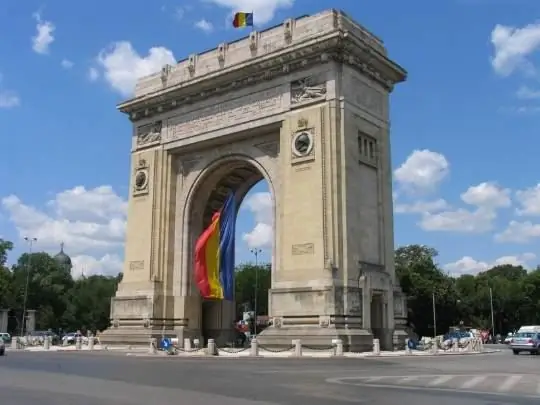
Description of the attraction
This memorial building is another notable state monument. Examples of triumphal arches, the history of which dates back to the time of the Roman Empire, can be seen in many countries. In Bucharest, the arch is located in the area of the largest Harestrau park on the Kiselev highway - the second largest highway in the capital of Romania. The place was not chosen by chance: the head of the Russian military administration of Romania, Count Pavel Dmitrievich Kiselev, did a lot for the development of the country and in 1859 supported the unification of the principalities into a single state.
The decision to build the arch was made in 1878. Since the opening was planned for Independence Day, December 1, in order to speed up construction, the first Arc de Triomphe was made of wood. More than 30 years later, construction began on the second option - made of concrete finished with plaster. It existed until the start of construction, in 1935, the final version was made of reinforced concrete, finished with granite. A whole team of Romanian architects and sculptors worked tirelessly to complete the work by Independence Day. On December 1, 1936, the grand opening of the Arc de Triomphe, built according to the classical canons, which successfully fit into the architecture of the capital, took place.
The height of the arch is 27 meters, the width is about 10. Despite its massiveness, the structure looks harmonious, in the style of classical arches. In the monument itself, internal stairs have been made, along which you can climb to the upper terrace to admire the views of Bucharest. The arch is decorated in the manner of Romanian architecture - cornices, ornaments and portals and looks like one of those imposing structures, thanks to which Bucharest, at one time, was called "Balkan Paris".
Since April 2014, the Arc de Triomphe has been closed for restoration.






